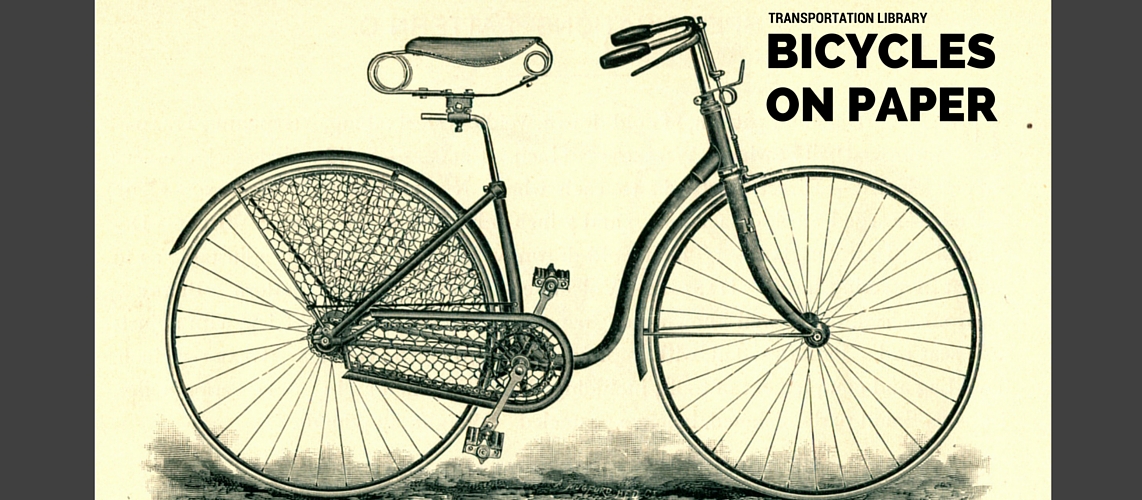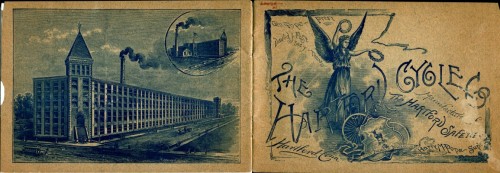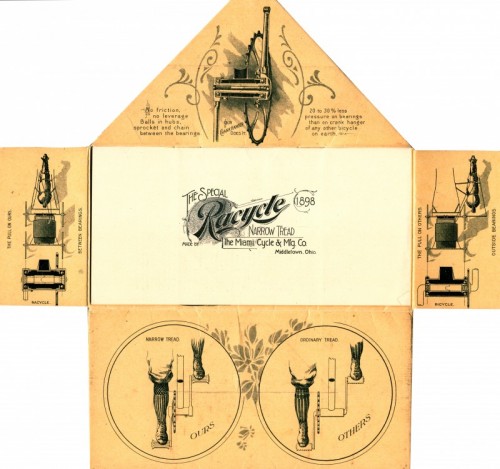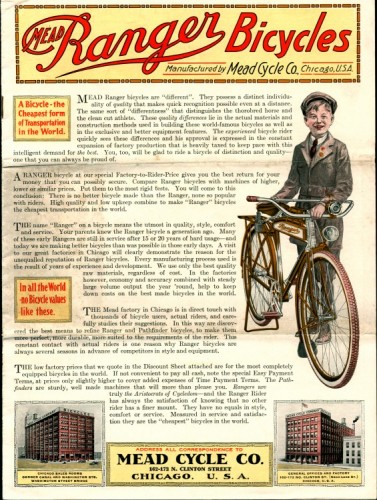The bicycle boom of the 1890s led to the formation of, and intense competition between, bicycle companies around the world. Catalogs of that period highlight continuous improvement on competitors’ designs—illustrated in the Racycle and Hartford Cycle catalogs below—in order to attract new buyers to the most innovative new models.
Innovation continued as a theme in later catalogs, but by the 1920’s, as in the Mead Ranger catalog below, an emphasis on bicycles as the cheapest form of transportation was also prominent: the popularity of bicycles had been in decline for decades in parallel with the rise of the automobile and improvements in public transportation in cities.
Hartford Safety Bicycles
Hartford Cycle Company
1891
The Hartford Cycle Company advertised the Hartford Safeties of 1892 for women and men, the third year of production for the company. Cushion tires increased in popularity the previous year and are highlighted in the catalog, promoting the “finest grade of rubber, and their use demonstrated them equal to the best.” Bicycle weights ranged from 46 to 49 pounds.
The Special Racycle 1898 Narrow Tread
Miami Cycle & Mfg. Co., Middletown, Ohio.
1898
The Miami Cycle & Mfg. Co. published a catalog for its Racycle bicycle in 1898. Eleven models were available for sale, including a roadster, a racing cycle, women’s cycles (lighter weight and with a lower saddle for “less danger of a fall”), as well as models developed specifically for country roads. Structural details were highlighted to emphasize improvements made over previous models and ways in which Racycles surpassed the competition and included four reversible models of handlebars and Jacoby saddles made of paper.
Mead Ranger Bicycles
Mead Cycle Co., Chicago, Illinois
1924
Chicago’s Mead Cycle Company was among the city’s first bicycle manufacturers, in operation beginning in 1889. The full-color catalog pictured here, produced in 1924, advertised “the bicycle: the cheapest form of transportation in the world.” Fifteen different models were available, with unique models offered for men, women, boys, or girls. Bicyclists could choose from such accessories as luggage carriers, mud guards, several varieties of tires, and “pun-cura,” which healed tire punctures.



